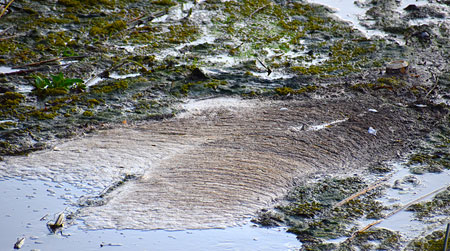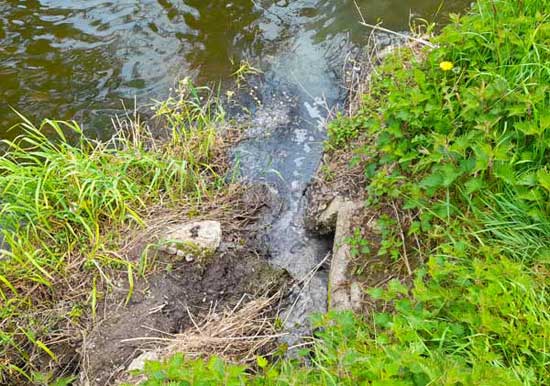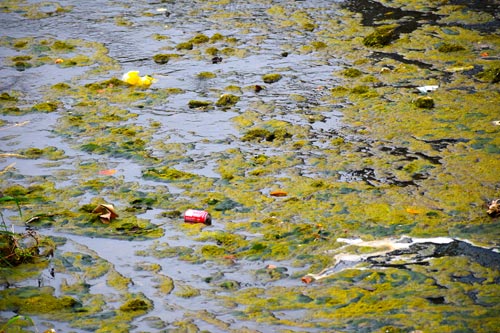The water quality of our rivers, lakes, estuaries and coastal areas continues to decline, says Environmental Protection Agency (EPA).
- Water quality in Ireland has further declined. While improvements are being made in some areas, these are being offset by declines in water quality elsewhere.
- At the current level of progress, Ireland will fail to meet the EU and national goal of restoring all waters to good or better status by 2027.
- Only just over half of surface waters (rivers, lakes, estuaries and coastal waters) are in satisfactory condition (that is they are achieving good or high ecological status and are able to sustain healthy ecosystems for fish, insects and plants).
- The deterioration in estuaries and coastal waters is mostly along the southeast and southern seaboards and is due to agricultural run-off. Urgent and targeted action is required to reduce nitrogen emissions from agriculture in these areas.

Suir estuary has lost its good water quality.
Thurles.Info first raised this issue with Tipperary politicians, Tipperary County Councillors and the EPA, nine years ago, starting on November 7th, 2013. Our claims were denied. See also Here (April 2019). See Here (July 2018) etc. etc.
Instead Tipperary County Councillors, lead by Fianna Fáil Councillor Mr Seamus Hanafin, ignored the river Suir, choosing instead to spread a 3 metre wide strip of tarmacadam on the river bank destroying existing biodiversity and local history.

The Environmental Protection Agency (EPA) has today published the Water Quality in Ireland Report 2016-2021 which provides the latest assessment of the quality of Ireland’s rivers, lakes, estuaries, coastal and groundwaters.
The report shows that water quality in Ireland is not as good as it should be. Only just over half of rivers, lakes, estuaries and coastal waters are in satisfactory condition. The overall ecological health of these surface waters has declined across all water body types since the last assessment (2013-2018). This means these water bodies are less able to support healthy ecosystems for fish, insects and plants.
While the decline in water quality of our rivers and lakes is relatively small (1% and 3% of waterbodies respectively), the number of estuaries and coastal water bodies in satisfactory condition has decreased by almost 16% and 10% respectively.
These declines are mostly along the southeast and southern coasts where nitrogen emissions from agricultural activities are having a significant negative impact on water quality. Excess nitrogen causes algal blooms in our estuaries which can damage the ecosystem, and excess nitrogen in drinking water can pose a risk to human health.
Commenting on the report, Dr Eimear Cotter, Director of the EPA’s Office of Evidence and Assessment, said: “The scale of the declines in our estuaries and coastal waters is alarming. In recent years the EPA highlighted that nutrient levels in our rivers and groundwaters are too high and that trends were going in the wrong direction. We are now seeing the impact of these emissions on our estuaries and coastal waters. Areas such as Cork Harbour, Wexford Harbour and the Slaney, Suir and Nore estuaries have lost their good water quality status. This directly impacts the marine biodiversity and ecological value in these areas”.
The report highlights that since the last assessment published in 2019, the number of monitored water bodies in satisfactory condition has declined by:
- 1% in rivers,
- 3% in lakes,
- 16% in estuaries,
- 10% in coastal waters.

The main pressures on water quality are agriculture, physical changes such as land drainage and dredging, forestry activities and discharges from urban wastewater. These activities can lead to run-off of nutrients, sediment and pesticides and damage to the physical habitat of waterbodies. The number of waterbodies impacted by urban wastewater remains high, but it is reducing, and the trend is going in the right direction. The number of waterbodies impacted by agriculture has, however, increased in recent years.
Ms Mary Gurrie, Programme Manager, added: “Improvements in water quality are being made, particularly in the priority areas for action where there has been focussed action to restore water quality in the past three years. This shows that improvements to water quality can be made when actions are targeted. However, the gains made are being wiped out by declines in water quality elsewhere”.
The EPA is calling for urgent and targeted action to protect and restore water quality in the next River Basin Management Plan (2022-2027), and full implementation of, and compliance with, the Good Agricultural Practice Regulations.
The full report and a summary report are available on the EPA website.
Further information on water quality data and catchment assessments is available HERE.

Leave a Reply